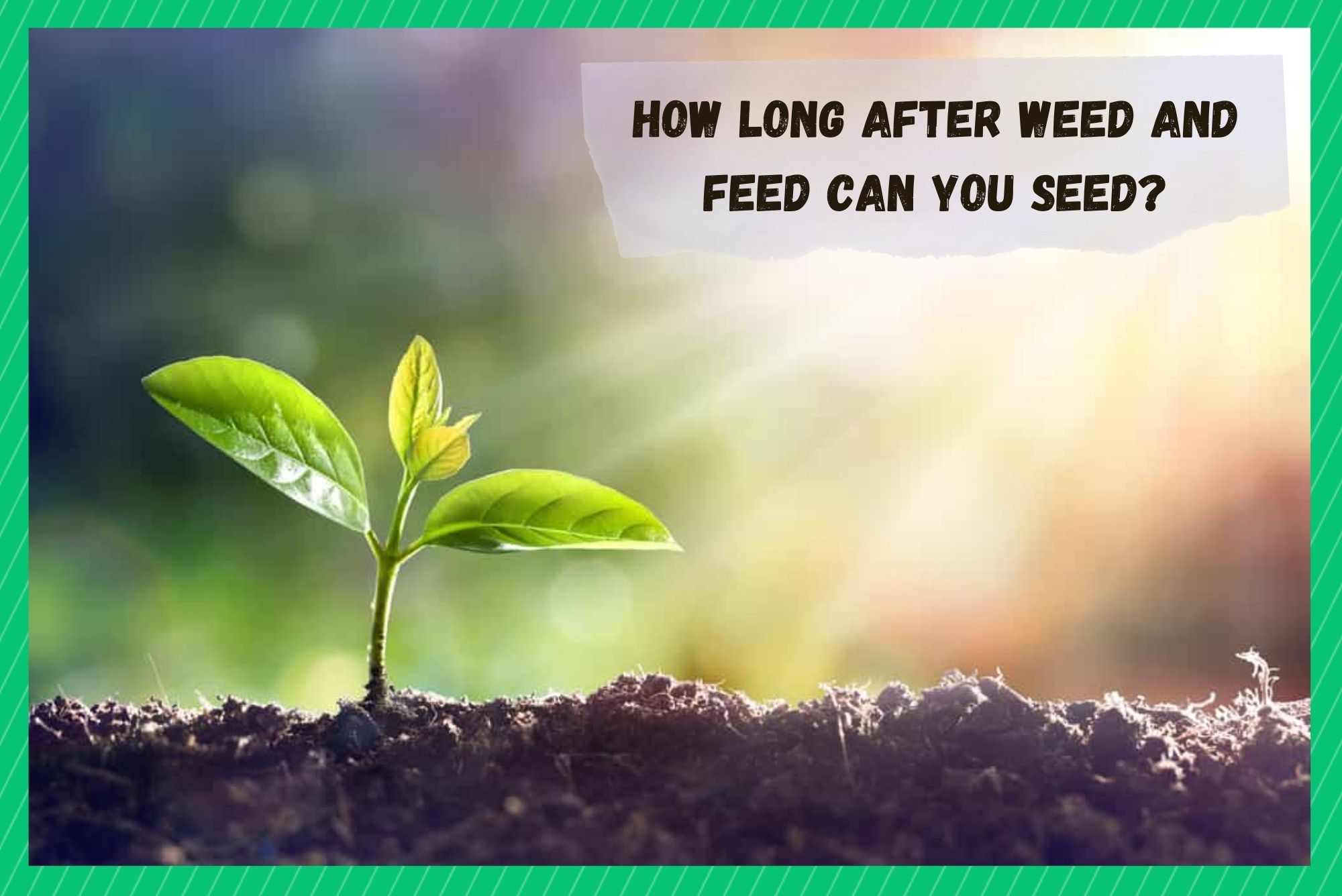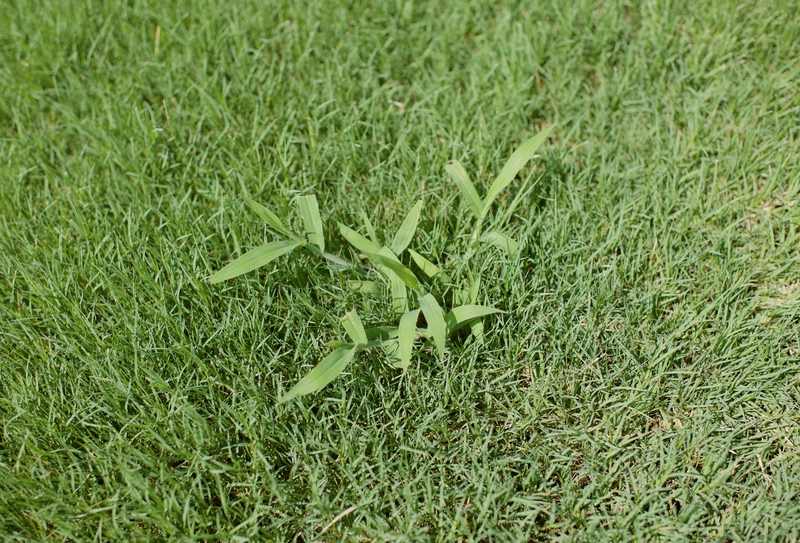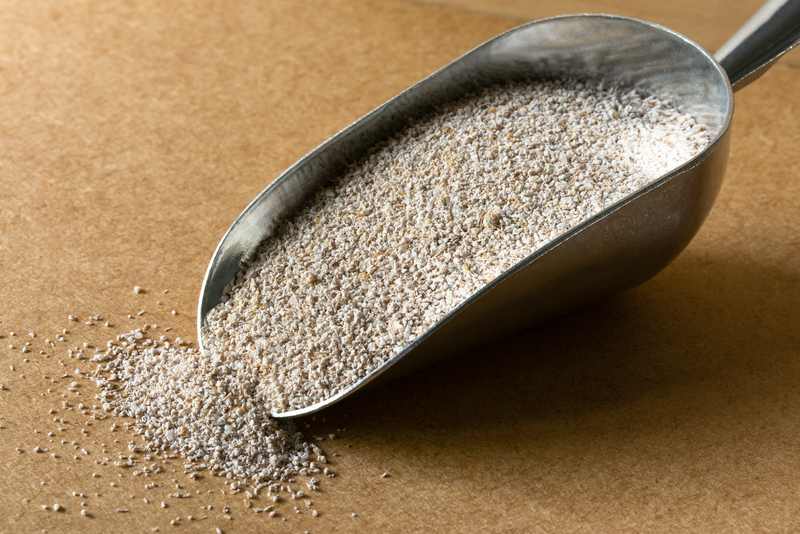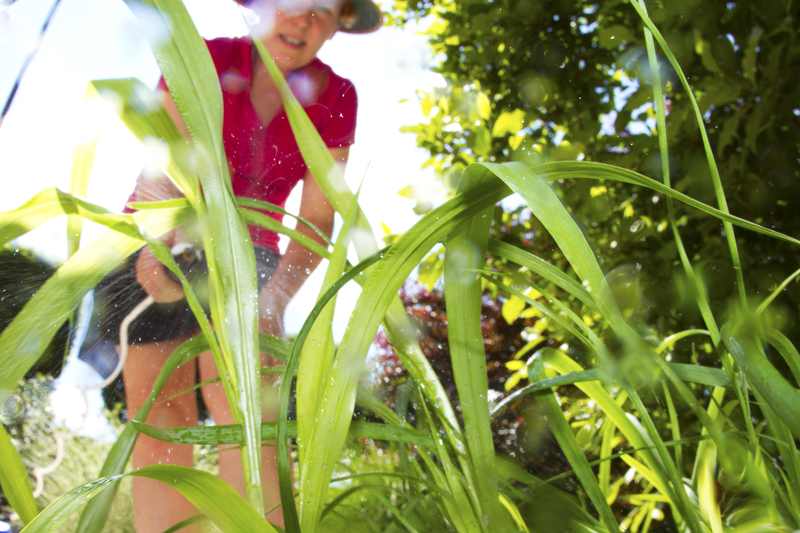How Long After I Plant New Grass Can I Weed and Feed

Maintaining your lawn or garden requires a lot of work. There is a certain amount of care that needs to go into, which includes taking effective measures when getting rid of weeds.
There are several ways you can go about getting rid of weeds and helping your plants grow, though this also depends on the type of weeds you are dealing with.
When dealing with lawns and gardens and subsequent weed removal, many have concluded that using the process of weed and feed have been found to give the best results and control weeds.
This method is also especially helpful against wide leaf weeds and you will find that your experience with it will be a positive one.
What Is A Weed?

Before understanding the process of weed and feed, and then how long after can you begin seeding, you need to first look at what a weed is. A weed is primarily defined as a plant growing somewhere it is not needed or wanted.
It includes plants that grow but weren't sown intentionally or other plants that appear to be competitive and steal the nutrients from other plants. Another way to determine if a plant is a weed is if the negative qualities of the plant outweigh its positive qualities.
Ultimately the decision is ours when we're determining what is and what is not a weed in our garden.
There is a list of characteristics that can help us determine this, and we need to see if the plant is posing a threat to us, our families, our pets or livestock, or even to the majority of our crops or other plants that we want to grow.
Characteristics of Weeds
Weeds can be considered weeds when they become troublesome and damage the overall health of your lawn or field. There are certain characteristics that a weed possesses.
- They are plants that produce an abundance of seeds.
- These plants have wide, deep, and extensive root systems that spread vastly underground, thereby pushing themselves into other plants' territories.
- They grow very fast.
- The plants are the cause of bodily harm to humans or animals
- They also harbor diseases and insects that are a threat to the plants you want to grow
- They can produce toxins and pollute the air or soil.
Not all plants that grow unintentionally are dangerous. A plant is only a plant until you determine it is a weed. So if there is a plant growing that isn't necessarily dangerous, you may not need to get rid of it.
However, if you do find plants that are detrimental to you, your animals, and your plants you will need to find a way to remove them and control their spread. One such method is the weed and feed.
What are Weed and Feed?

The term weed and feed is a universally understood and interchangeable name that is given to a large collection of lawn chemicals. The chemicals are specifically used for and have the strength to kill weeds. It also provides your lawn with an overall improvement in its health.
It does this by increasing the lawn's ability to absorb water and food, as well as adding all necessary nutrients into the soil that are needed to promote growth.
A healthy lawn, therefore, does not permit the growth of weeds and aims at controlling and eventually reducing its propagation over time.
What does 'Weed' mean?
The weed in the process of weed and feed is attributed to herbicides, which are chemicals used to stop the growth of unwanted plants. These chemicals are used to reduce pesky flowers such are dandelions, dollar weeds, and other leafy weeds.
What Does 'Feed' mean?
The feed part of the process refers to the use of fertilizer. This can mean using your average grade fertilizer that includes a combination of phosphorus, nitrogen, and potassium. You can find different ones that have a variety of blends but they are generally designed to help in the overall growth of the plants.
How Long After Weed And Feed Can You Seed?
After understanding the basic terminologies, it is important to understand how weed and feed work, when they should be applied, and how they should be used.
Weed and Feed
As the name suggests, weed and feed is a lethal and helpful combination of weed killer and fertilizer. It works like this: when applied, granules are absorbed by the weed but slide off of the leaves of the other plants.
This, in turn, kills the weeds, and the fertilizer is then present to fertilize the remaining plants.
It is a rather easy way to get rid of weeds and maintain healthy grass growth. It allows you to control the health and beauty of your plants.
What Does Weed and Feed Kill?
Weed and feed target primarily broad-leafed weeds such as dandelion or knotweed. For other types of weeds such as crabgrass, you would need to find another type of weed-killer.
Is it Safe?
Weed and feed work great for grass but should not be something you use on vegetables or plants with fruit. This is because the products contain several toxins that focus on killing weeds, and they become dangerous for plants that are grown for consumption.
It is also not recommended to use this on plants grown for cattle feed or if you have pets that are likely to get in your garden and eat your plants.
It can, however, be quite ideal for places and plants that will not be eaten and additionally for clearing out a space where you would need to grow flowering plants.
When Should It Be Applied?

Typically weed and feed should be applied when you see weed popping up. This typically happens in the spring. If you feel like you need to repeat the process of adding on weed and feed you should ideally wait till the fall, giving your time to recover.
Also, it is important to remember not to apply weed and feed to a newly seeded lawn. Instead, wait till it is mowed at least two times if not more.
Before beginning, you need to mow your lawn to its normal height at least one day before application. Then water your lawn if possible as granules are likely to stick to weed better if they are slightly dampened.
You should ideally apply weed and feed when the temperature is favorable- not below freezing, or not too hot, and there should be no rain forecasted. If you are suffering extreme temperatures, the weed and feed will destroy your lawn as it will have been weak because of the changing climate.
How Often Can it Be Applied?

As discussed it can be used in the spring and then again in the fall. Applications should at least be two months apart. The longer you wait, the better as your lawn would need to regain its strength before the next application
How Long to Wait?
After exploring the process, there remains the question of when the right time to begin seeding is. Due to the toxic chemicals of the weed and feed, you can not possibly plant your seeds immediately.
The toxic tend to leave a residue in the soil and can result in various problems for your plants. Therefore, you would need to wait an appropriate amount of time where all the toxins have dissolved properly and their strength has dissipated before bringing new seeds.
Weed Killing Course

Similarly, if you continue to use weed and feed on your lawn, you should not be seeding until you have ended the whole weed-killing course. It is safer for the growth of your new plant.
Minimum Wait Period
The minimum waiting period for the planting of new seeds into soil that is treated with weed and feed is typically a fortnight. This should be enough time for the residual particles of the product to destroy all the weeds and vanish, making room for your new seeds to grow.
However, sometimes you may find that it is still not the optimal time to plant and therefore, you need to wait a few more days or at least another week just to be completely sure that the soil is toxic-free. This way you won't need to worry about your seeds getting poisoned and they can grow properly.
Conclusion
Weed and feed can be quite helpful if you have pesky weeds that you can't get rid of it is easy and efficient though you need to remember to use it carefully.
The best time to seed your soil after applying the weed and feed is at least after 14 days, though waiting for a long time can also help make sure your soil is completely free of any poisonous materials.
ransomsolockrapery.blogspot.com
Source: https://farmergrows.com/how-long-after-weed-and-feed-can-you-seed/
0 Response to "How Long After I Plant New Grass Can I Weed and Feed"
Post a Comment